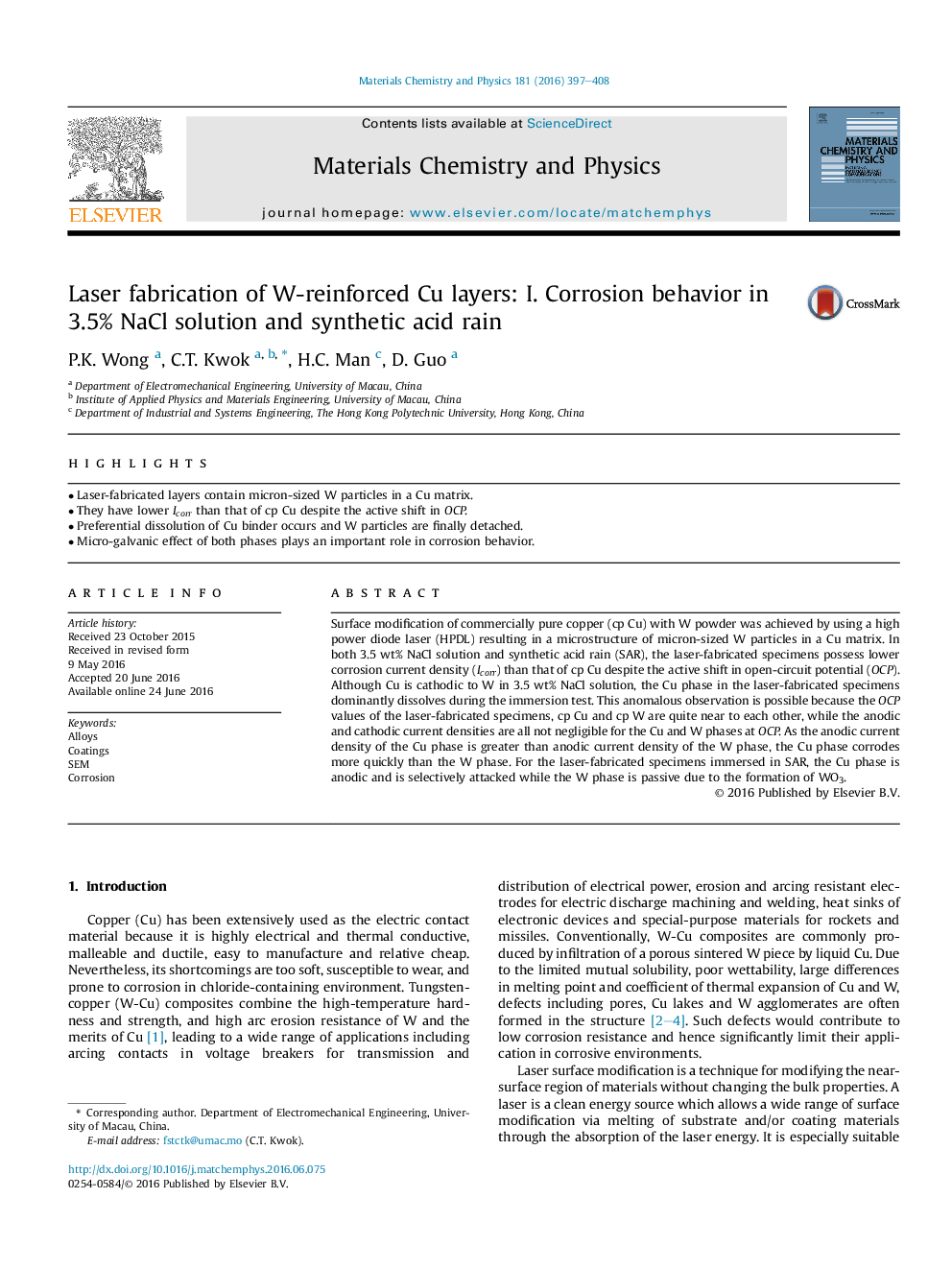| Article ID | Journal | Published Year | Pages | File Type |
|---|---|---|---|---|
| 1520480 | Materials Chemistry and Physics | 2016 | 12 Pages |
•Laser-fabricated layers contain micron-sized W particles in a Cu matrix.•They have lower Icorr than that of cp Cu despite the active shift in OCP.•Preferential dissolution of Cu binder occurs and W particles are finally detached.•Micro-galvanic effect of both phases plays an important role in corrosion behavior.
Surface modification of commercially pure copper (cp Cu) with W powder was achieved by using a high power diode laser (HPDL) resulting in a microstructure of micron-sized W particles in a Cu matrix. In both 3.5 wt% NaCl solution and synthetic acid rain (SAR), the laser-fabricated specimens possess lower corrosion current density (Icorr) than that of cp Cu despite the active shift in open-circuit potential (OCP). Although Cu is cathodic to W in 3.5 wt% NaCl solution, the Cu phase in the laser-fabricated specimens dominantly dissolves during the immersion test. This anomalous observation is possible because the OCP values of the laser-fabricated specimens, cp Cu and cp W are quite near to each other, while the anodic and cathodic current densities are all not negligible for the Cu and W phases at OCP. As the anodic current density of the Cu phase is greater than anodic current density of the W phase, the Cu phase corrodes more quickly than the W phase. For the laser-fabricated specimens immersed in SAR, the Cu phase is anodic and is selectively attacked while the W phase is passive due to the formation of WO3.
